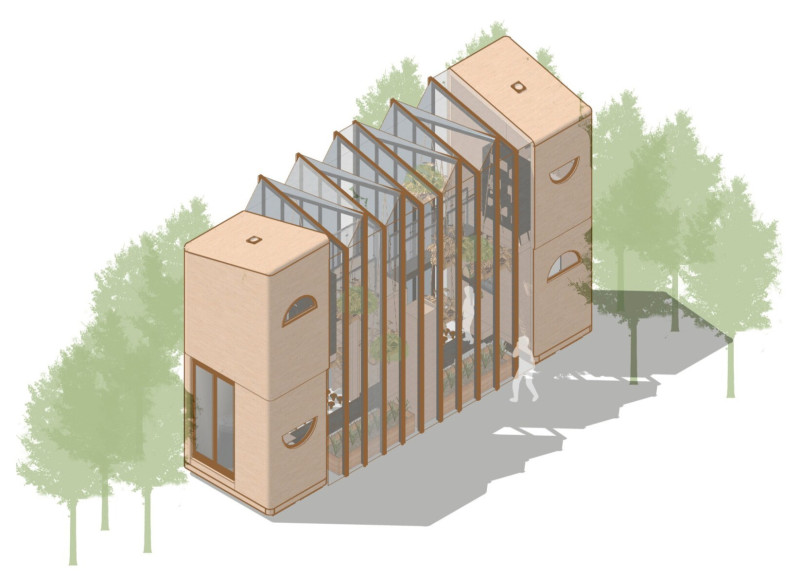5 key facts about this project
The architecture of the project is notable for its unique blend of modern design with local vernacular elements. This approach not only pays homage to the cultural context but also enhances the building's relevance and acceptance within the community. The exterior façade features a combination of local stone and sustainably sourced timber, highlighting a commitment to using materials that are both environmentally responsible and contextually appropriate. The carefully chosen materials contribute to the building's thermal performance, reducing energy consumption while providing a comfortable environment for its occupants.
The design includes expansive glazing that invites natural light into the interior spaces, creating an inviting atmosphere that fosters creativity and interaction. This intentional use of light serves a dual purpose: it enhances the building's aesthetic appeal and minimizes the need for artificial lighting during the day. Strategic overhangs and shading devices have been incorporated to mitigate heat gain, further emphasizing the project's ecological sensitivity.
Inside, the layout is thoughtfully organized to facilitate a variety of functions. Open-plan areas are connected by flexible spaces that can be adapted for different uses. This flexibility is crucial in accommodating the diverse needs of the community, allowing for both intimate gatherings and larger events. The incorporation of movable partitions offers additional versatility, enabling the space to be reconfigured as needed.
One of the project’s distinctive features is its emphasis on indoor-outdoor connectivity. Courtyards and landscaped gardens are thoughtfully integrated into the design, creating serene spaces for relaxation and informal gatherings. These outdoor areas are not just aesthetic; they serve as vital extensions of the indoor environment, promoting wellness and encouraging social engagement among users.
Architectural sustainability is a key theme throughout the project. The design incorporates rainwater harvesting systems and green roofs, which not only enhance biodiversity but also improve the building’s environmental footprint. Solar panels have been strategically placed to maximize energy production, supporting the building's energy needs and further demonstrating a commitment to sustainability.
Attention to detail is evident in the selection of finishes and furnishings, which were chosen to reflect the overall design ethos. Natural materials are favored, and their textures add warmth and comfort to the space. This careful curation of elements creates a cohesive and inviting atmosphere, ensuring that the architecture remains user-friendly and accessible.
In summary, this project exemplifies a modern architectural philosophy that prioritizes community engagement, sustainability, and adaptability. Its unique design approach, alongside thoughtful material choices and spatial organization, creates an environment that is both functional and aesthetically pleasing. The project serves not only as a building but as a catalyst for social connection and community development. To explore the architectural plans, sections, and designs that further highlight the innovative ideas embedded in this project, readers are encouraged to delve deeper into the project presentation for more insights.


























